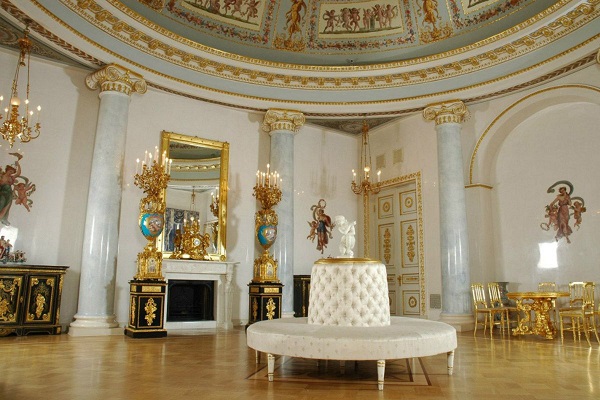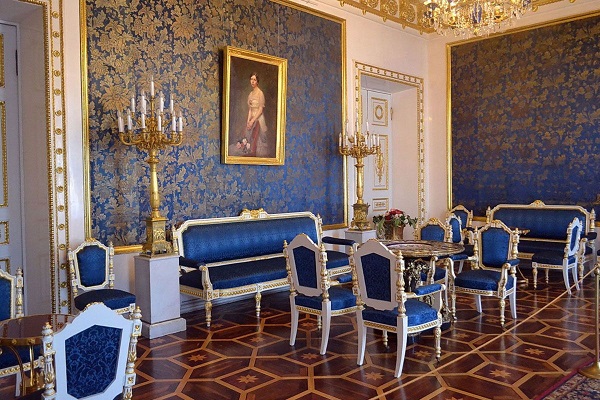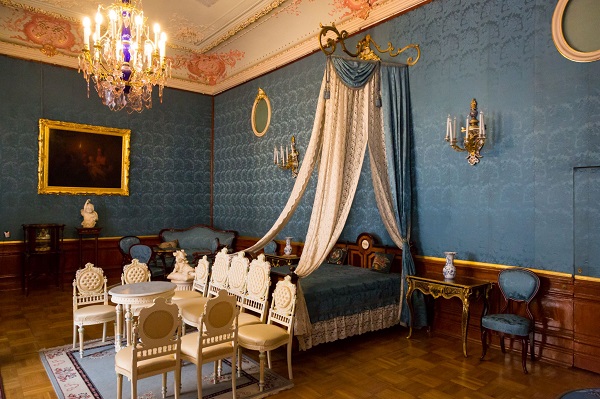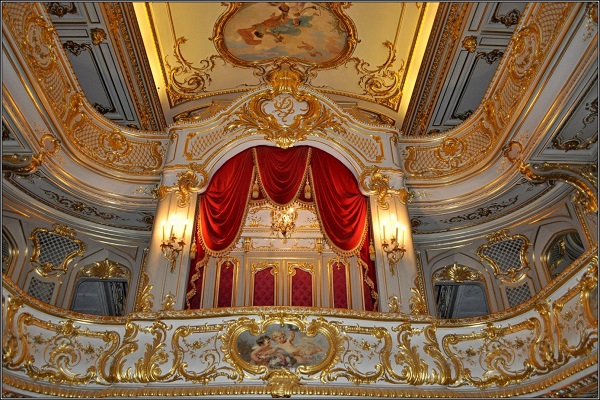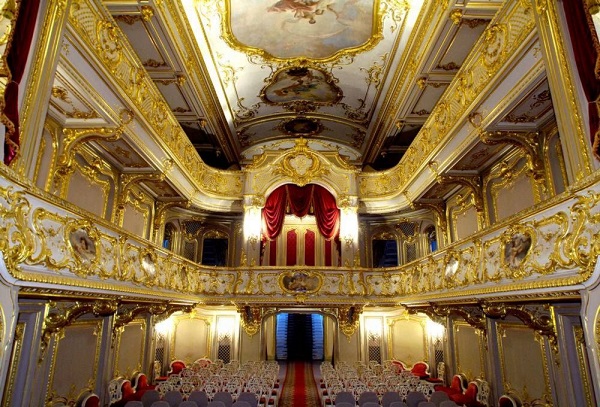Address:
St.Petersburg, Dekabristov Str., 21
Metro:
Admiralteyskaya, Sennaya Ploshchad/Sadovaya/Spasskaya
Yusupov Palace in St. Petersburg
One of the 18th century palaces is located in an old part of St. Petersburg on the bank of the Moika River, close to St. Isaac’s Cathedral, Mariinskii Opera and Ballet Theatre, New Holland Island and Nicholaevskii Palace. The owners were Prince Yusupov’s wealthy family who resided at the palace until the Revolution of 1917. Regardless of the numerous restorations due to the tastes of the generations of the family living in Yusupov Palace through the whole 19th century the outer appearance of the main façade was retained.
Many outstanding architects, sculptors, artists and interior designers worked on it. The magnificent balls of noble society held in the opulent interiors gained a great reputation for this home. The owners of the palace belonged to the Russian aristocratic elite. Their excellent education and taste determined the style of Yusupov Palace.
The founder of the family art collection, Nikolai Yusupov Sr. (1751-1831), commissioned paintings from the most talented contemporary artists. The unique collection of Western European painting and sculpture made the Yusupov Palace a true museum of art. By the time the first catalogue of the collection displayed in Yusupov’s Gallery had been published it numbered 483 paintings and 31 marble sculptures.
In the early 19th century in Paris the prince was presented with two vases of Sevres porcelain and three tapestries depicting the hunt of Meleager. A special room was designed in the Yusupov Palace to house these works of art.
In the second half of the 19th century the palace owner was Nikolai Yusupov Jr. (1827-1891), an honorary member of the Roman Academy of Music and the Paris Conservatoire. He was a talented composer and his musical compositions could be heard in aristocratic salons in Europe. In Yusupov Palace the compositions were performed on the stage of the “golden bonbonniere” the Yusupov’s beautiful miniature home theatre. Nikolai Yusupov Jr. was also a passionate collector of works of art and especially rare musical instruments. The collection of valuable musical instruments was kept in the Italian style hall on the ground floor of Yusupov Palace.
The last owners of the Yusupov Palace were Prince Felix Yusupov the Younger and his wife Irina Romanov, niece of the last Russian monarch, Nikolas the second. Their rooms on the ground floor of the palace have a diversity of subtle décor in the neoclassic style. The artistic and luxurious interiors were designed according to the highest standards of the early 20th century.
Due to the talent of the architects who changed the interiors of Yusupov Palace throughout the one hundred and fifty years, all of the styles today are perceived as a harmonious whole. Thanks to that, the Yusupov Palace on Moika River was selected by British publishers Wiedenfeld & Nicolson for their catalogue of the finest stately homes of Europe.
In December 1916, the Yusupov Palace became the stage for the murder of Grigory Rasputin, a peasant who managed to be close to the Imperial family thanks to his ability to exercise hypnotic healing power over the hemophiliac heir to the throne, Alexey (1904-1918).
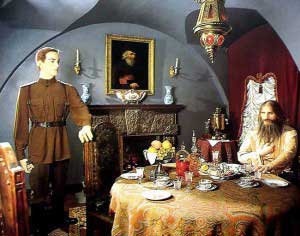
Grigory Rasputin was also referred to as the “evil genius of Russia” for his notorious private behavior and influence on state affairs during World War I.
The conspiracy led by Prince Yusupov happened in the basement of the Yusupov Palace on Moika River. It was surprisingly difficult for the conspirators to kill the charlatan, Grigory Rasputin.
Rasputin’s prediction about the Royal family’s fate “to stay alive as long as he did” came true a year after his murder. He truly had the power to predict the future either from God or the Devil.
Prince Felix Yusupov, one of the main participants of the assassination, emigrated from Russia on board the dreadnought "Marlborough" in 1919. Their Moika Palace was subsequently used by the Swedish consulate and the embassy of Germany.
In 1925 the Yusupov mansion was given to the Trade Union of Education Workers and it still houses the Community Centre of Workers in Education. Thus the Palace for many years has been under good care of this department.
Visitors now can see the exhibition displayed in the private apartments of the Prince Felix Yusupov where the conspiracy took place on the night of December 15, 1916. The exhibition is a small museum of wax figures that tells the story of this famous historical event and is set in the recreated original interiors of the early 20th century.
More than 50 interiors are open to visitors now as a museum. The Yusupov Palace organizes a variety of cultural programmes such as concerts of classical music and theatre performances.
The grand-daughter of the Prince Yusupov, Xenia Yusupova-Sheremeteva-Sfyris, who lives in Paris in her Grandfather's home sometimes comes to the palace.
Read more
- How to travel in Saint Petersburg without living your home
- Four of the ten best restaurants in the country are in St. Petersburg
- The first Holocaust museum in St. Petersburg
- A scientist from St. Petersburg created the biochronicle of Peter the Great.
- 10 interesting facts about Saint-Petersburg streets

